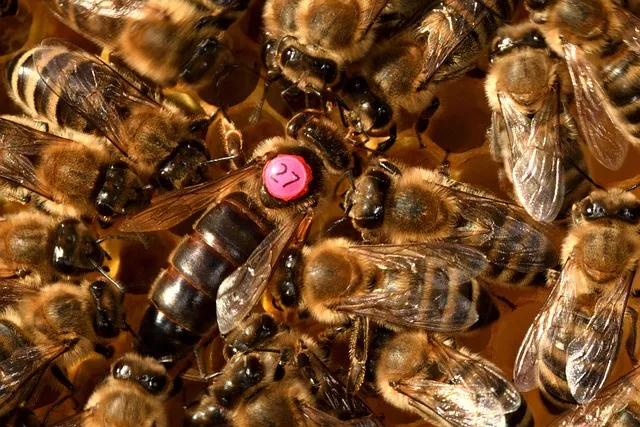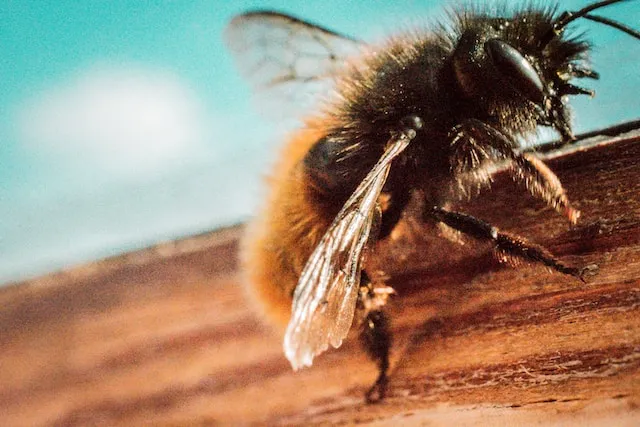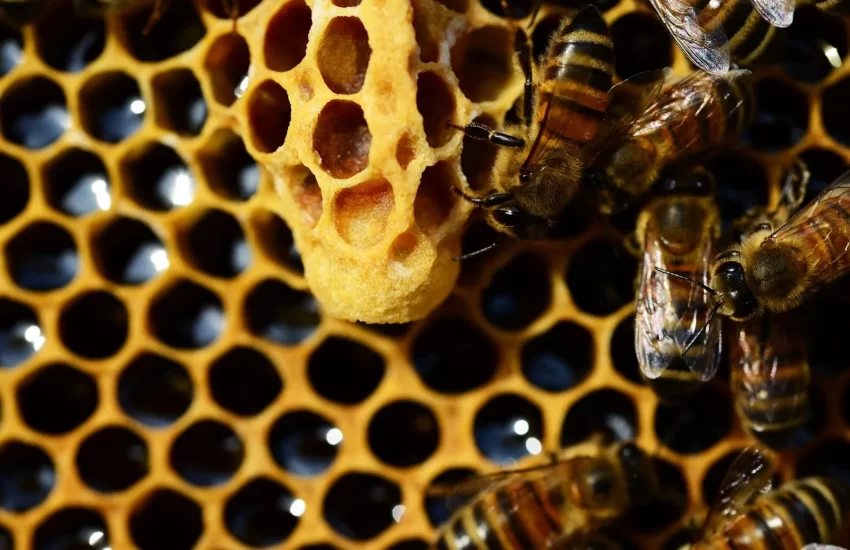What Happens When a Queen Bee Dies?
The queen bee is a fascinating creature and the star in a bee colony. She is the largest, lives singly in a multitude of up to 60,000 hive dwellers, and is the mother of all. Her role is to lay eggs and ensure the continuation of the bee colony. She is the only one fed with royal jelly in her entire life. The worker bees can raise a new queen or eliminate an unproductive one. She lives her entire life in the hive, attended by worker bees who groom and feed her.
What happens when a queen bee dies?
When a queen dies, the colony immediately starts the process of rearing a new one. The worker bees find eggs or larvae that are less than three days old, place them in emergency queen cells and feed them with royal jelly. The first queen to emerge kills all the developing queens to be left alone. The new virgin queen takes her nuptial flights to mate with drones before she starts laying eggs. Her death brings total disorientation to the hive.
Similar Articles you may like to read –
How long do queen bees live?
How quickly do bees multiply? Reproduction of Honey Bees
Are queen bees born or made?
How Many Times Does A Queen Bee Get Mated?
What Do Bees Eat? Do bees eat Honey? Do queen Bees eat Honey?
Where does a queen bee come from?
The queen bee begins her journey as a fertilized egg. She originates from the same larva, just like the worker bees. When a colony requires a new queen, a few young female larvae are selected and fed with royal jelly. Exclusive feeding of this diet to the larvae helps the larvae develop into sexually reproductive females (queens). It takes 16 days for her to hatch.
Role of a Queen Bee
The queen bee is the only female in a colony who lays eggs that can become workers and play a vital role in the population. She can lay up to 2000 eggs daily in the peak seasons. She releases pheromones that stop the functioning of the ovaries of other female bees from laying eggs. However, when she dies, the workers can lay unfertilized eggs, which brings forth drones. Unlike the worker bees, she has a smooth stinger that she used to fight fellow queens. She can sting several times and survive. She also uses her stinger while laying eggs.
Should You mark the Queen?
It is hard for a new beekeeper to spot a queen in the hive. That is why it is good to mark her, although you become effective in spotting her with time. She is marked by placing a small dot on her thorax. It is easy to tell when she was born using a consistent color for a single year. The cost of marking a queen is $5-$10. Alternatively, you can buy a marked queen.
Causes of the Queen’s Death
The common causes of the queen’s death are disease, beekeepers’ error, and predator attacks. While beekeepers try exceptionally hard to protect the queen bee in the hive, she may be killed accidentally during a hive inspection or other beekeeping tasks. A beekeeper may allow the colony to raise another queen or requeen the colony when this happens. The new queen should arrive safely in a queen cage and be placed inside the hive.
How to Know Your Colony Doesn’t Have a Queen.
Failure to locate a queen during your hive inspections should not make you conclude that your colony is queenless. Here are some of the indicators to help you determine.
Absence of Eggs and Brood
Queens can lay up to 2000 eggs in a day during the peak seasons. If you realize a significant decrease in the number of cells, eggs, and brood, there is a chance that the hive is queenless. During inspections, keeping a record will help record this type of data and know things are not right.
Presence of queen Cells
The presence of emergency queen cells is a sign that your colony is queenless.
Increase in Number of Drones
This can indicate that your workers are laying eggs due to the lack of queen pheromones that suppress the reproduction of other female bees.
A decline in Worker Bees
If the bee colony seems smaller than before, and there is no swarming, then the bees may not have a queen.
Your Bees Becomes Suddenly Aggressive
If there is a change of behavior in the bees, such as uncommon aggressiveness, the chances are that the hive is queenless. The absence of the queen influences their behavior and reproduction within the colony.
When should a beekeeper replace a queen?
Depending on the year’s season, you may decide whether to let the bees raise their new queen or not. If it is closer to winter, the more the urgency of replacing a queen becomes. When there is no brood available for the worker bees to raise a new queen, the workers will start laying eggs.
How the Colony Replaces the New Queen
The worker bees find eggs or larvae less than three days old and place them in queen cells. The cells are surrounded by royal jelly, a nutritionally rich substance secreted by worker bees. The fertilized eggs take three days to hatch into larvae. The nurse bees feed the larvae with royal jelly exclusively. They then pupate in the queen cells after six days of fast growth. The first queen to emerge takes over the throne by killing all the other developing queens to be left singly. If two queens emerge simultaneously, they fight until one of them dies. After being nursed by young worker bees for several days, the new queen takes nuptial flights to mate with the drones in mid-air.
How long Does it Take for a Colony to Raise a New Queen?
When brood is available, the workers in a queenless colony will start raising a new queen immediately. They are most likely to use three old larvae. At around day 5, the cells are capped, and at around 12-13 days, a new queen emerges. After a week, the virgin queen goes out on her first nuptial flight to mate with the drones. The time it takes for the new queen to start laying eggs and securing the colony is at least 20 days from when the hive became queenless.
What Happens When the Workers Fail to Raise a New Queen
This is the worst scenario for a bee colony. A queenless colony can not survive for an extended period. Her absence makes the bees aggressive. The worker bees may lay eggs, but they all become drones since they are not fertilized. The male bees do not collect food resources; hence the number of productive bees dwindles until the colony disappears. The whole bee population becomes stressed and susceptible to pests and diseases. The only way to save the colony is for a beekeeper to introduce a new queen.
Why a Queen May Fail in His Reproductive Role
An essential characteristic of an adult queen is the ability to lay fertilized eggs. By mating with drone bees, she can lay fertilized eggs. She stores enough sperm to use in her lifetime. Once the stored semen is depleted, she is no longer productive and lays only unfertilized eggs, becoming drones. Her inability to produce worker bees makes the colony start plans to replace her. Again as she ages, her egg-laying ability decreases, and she lays eggs in a less organized manner. If the bees fail to replace her, the beekeeper will need to buy a new queen.
Types of Queen Cells
There are three types of queen cells that are made in a honey bee colony. They have ample space to allow the extra-long abdomens to grow.
Supercedure Cells
The workers create supersedure queen cells if the queen is increasingly becoming infertile, sick, or old. They find some young larvae, feed them with royal jelly, and build supersedure cells around them for protection. The first queen that emerges from the cell kills the other developing queens and automatically becomes the queen and supersedes the old one. The old queen is destroyed after the supersedure process. Supersedure cells are found on the comb’s face, extending out from the surface and hanging downwards. To boost the odds, most colonies produce several cells simultaneously. A beekeeper can trigger a supersedure impulse to raise a large number of quality queens in a controlled manner. Successful raising of queens requires:
- An abundant supply of nectar and pollen
- Conducive weather of mating of drones and queens
- A queen mother to breed from, whose offspring ( worker bees) display excellent characteristics like disease resistance, good honey production, and low swarming tendency.
- Presence of healthy and sexually mature drones to mate with the newly emerged queens.
Emergency Queen Cells
Emergency queen cells are made on top of existing worker larvae if the queen dies suddenly without any warning. Their presence indicates that the colony is in crisis. They are partly vertical and horizontal, with a right angle bend at the center. The worker bees build emergency cells anywhere on the comb. Hence they may be scattered. This is how you can distinguish them from swarm and supersedure clustered cells. It takes around 15 days for a new queen to emerge. If the worker bees manage to raise a new queen, the colony gets back on track relatively fast. Emergency cells are usually of low quality since bees work with what they have. A beekeeper should regularly check for the presence of queen cells as they may help to know the health of the queen or colony.
Swarm Cells
Worker bees prepare swarm cells to take the queen’s place that is preparing to leave the hive with half of the colony due to overcrowding. The bees produce many swarm cells at a go. They create them at the margins of the comb when the colony is preparing to swarm. Swarm cells mean that your colony is healthy. Queens raised through natural impulses( swarming and supersedure) are usually well-developed with good egg laying potential. Since the larvae are destined to become queens, they are fed an appropriate diet from the word go.
How to Manage Queen Cells in Your Hive
The presence of queen cells in the hive might make you worry. But if you can distinguish the different types of cells, there is no need to panic. Supersedure or emergency queen cells should be left for the bees to manage unless the process of raising a new queen is unsuccessful. However, you need to remove the swarm cells and appropriately deal with the swarming alert to avoid losing half of your colony.
FAQs
What is the average lifespan of a queen bee?
A queen bee has the potential to live for three or more years. However, her life may be cut short by poor mating, bad genetics, diseases, or a beekeeper mistake.
After how long is the colony aware of a missing queen?
The colony is aware of the queen’s absence after about 15 minutes of the event. The workers move swiftly to build queen cells to raise another queen.
How long can a colony survive without the queen bee?
If the queen is removed from the nest and no replacement is made, the colony will continue for a while. The present worker bees will live their short lives (6 weeks) or a couple of months.
What is a queen cell?
A queen cell is where a larva develops and matures into a new queen. They are approximately one inch long and have a peanut shape and rough texture.
More articles you may like to read –
Interesting Facts About Honey Bees
Are bees active at night?
Types of Honey Bees, Honey Bee Stocks
How far do honey bees travel from the hive?
What smell do bees hate?
What is the difference between a supersedure and an emergency queen cell?
A supersedure cell is prepared when a queen is unproductive, while an emergency queen cell is created when a catastrophic event has happened to the queen. In case of an emergency cell, the workers make a queen cell out of a normal brood cell.
Why do beekeepers requeen their hives every 1 or 2 years?
Commercial beekeepers requeen their hives to maintain strong colonies and maximize honey yield.
Is it reasonable to requeen a swarm after capturing it?
The queen in a swarm is like any other queen and has originated from a healthy colony. The only problem is that you don’t know her history. You should requeen a colony when you have a valid reason for doing it.
You might be interested in our article ” Do Bees Have Lungs? How do honey bees breathe? “



